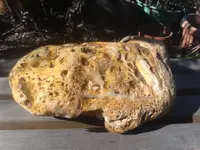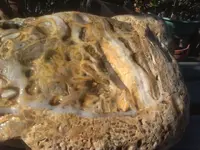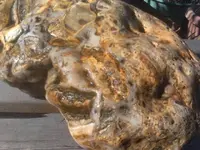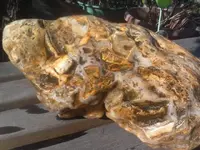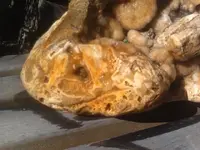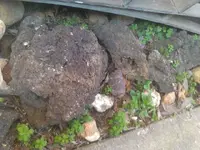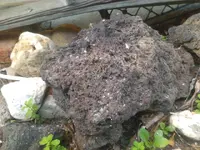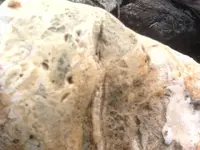Metamorphic rock
Metamorphic rock is the result of the transformation of an existing rock type, the protolith, in a process called metamorphism, which means "change in form". The protolith is subjected to heat and pressure (temperatures greater than 150 to 200 °C and pressures of 1500 bars[1]) causing profound physical and/or chemical change. The protolith may be sedimentary rock, igneous rock or another older metamorphic rock. Metamorphic rocks make up a large part of the Earth's crust and are classified by texture and by chemical and mineral assemblage (metamorphic faces). They may be formed simply by being deep beneath the Earth's surface, subjected to high temperatures and the great pressure of the rock layers above it. They can form from tectonic processes such as continental collisions, which cause horizontal pressure, friction and distortion. They are also formed when rock is heated up by the intrusion of hot molten rock called magma from the Earth's interior.
The study of metamorphic rocks (now exposed at the Earth's surface following erosion and uplift) provides us with very valuable information about the temperatures and pressures that occur at great depths within the Earth's crust.
Some examples of metamorphic rocks are gneiss, slate, marble, schist, and quartzite.
A good example of the metamorphosis process
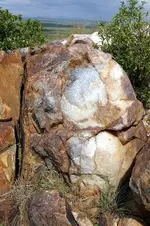
Orthoquartzite is very pure quartz sandstone composed of usually well rounded quartz grains cemented by silica. Orthoquartzite is often 99% SiO2 with only very minor amounts of iron oxide and trace resistant minerals such as zircon, rutile and magnetite. Although few fossils are normally present, the original texture and sedimentary structures are preserved. The term is often misused, and should be used for only tightly-cemented metamorphic quartzites, not quartz-cemented quartz arenites[3]. The typical distinction between the two (since each is a gradation into the other) is a proper quartzite is so highly cemented, diagentically altered, and metamorphosed that it will fracture and break across grain boundaries, not around them.
Quartzite is very resistant to chemical weathering and often forms ridges and resistant hilltops. The nearly pure silica content of the rock provides little to form soil from and therefore the quartzite ridges are often bare or covered only with a very thin soil and little vegetation.
